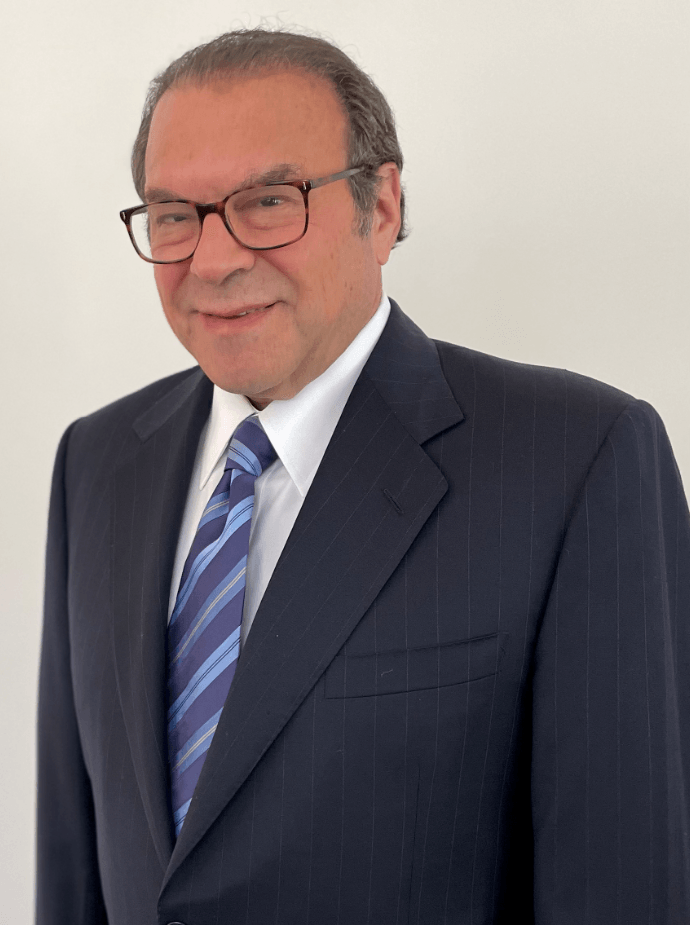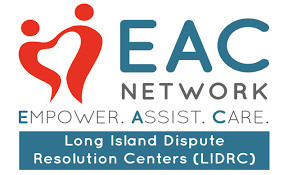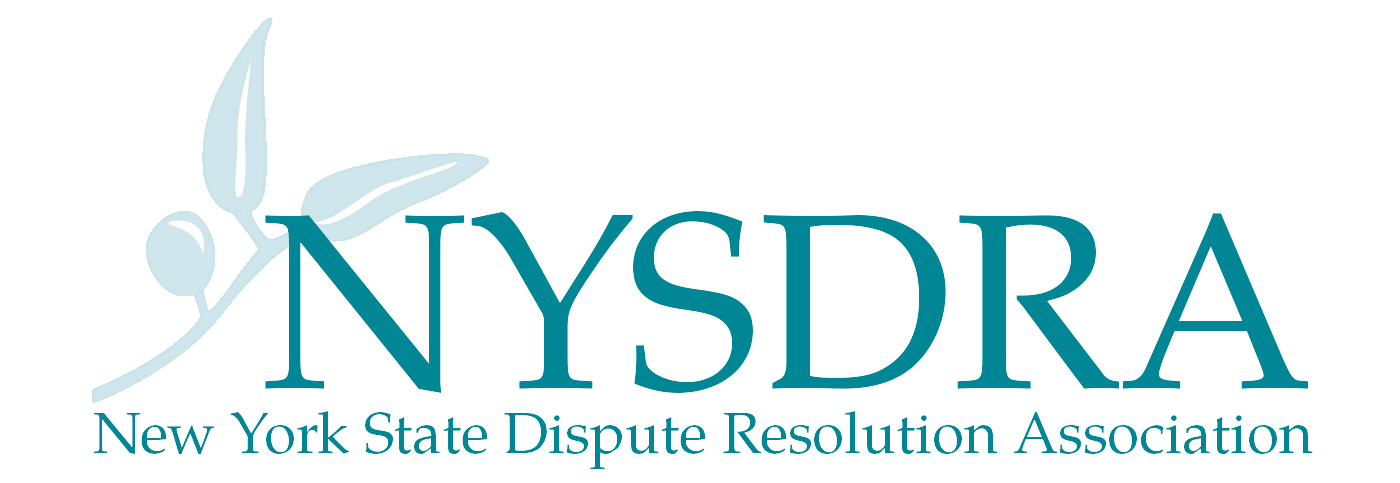An Interview with Lewis Bernstein

This arbitrator works with the EAC Network Long Island Dispute Resolution Centers (LIDRC) , one of New York State's 20 Community Dispute Resolution Centers (CDRCs). Read more about this work in the words of EAC staff following this interview or learn more about EAC now.
Joe Gorman:
Can you tell us a little bit about your background?
Lewis Bernstein:
My background is that I was a manufacturer for 40 years. I manufactured children’s and women’s coats. My offices were on 7th avenue and 34th
street. During that time I was also an arbitrator for the American Arbitration Association (AAA). I arbitrated with AAA for about 25 years and my cases were initially mostly garment industry cases. And then I grew within the Association and this was
maybe about 12 cases a year. I gradually moved from cases in the textiles and garment trades into a broader selection of cases that were commercial. I developed a niche where I became known for doing partnership disputes and did many of those kinds
of cases.
I retired about five or six years ago and during retirement I decided that I wanted to get back into something that interested me. Arbitration really interested me and it was a way of giving back to my community. Through the EAC
Network Long Island Dispute Resolution Centers (EAC), I started to mediate in small claims, and I was presented with the opportunity to arbitrate Lemon Law. I took the Lemon Law training and five years ago or so and here I am today— with I don’t even
know how many cases under my belt, but I have three or four boxes of case files over the five years so there are probably hundreds.
Gorman:
What goes into your preparation prior to a case?
Bernstein:
Preparation
for a virtual hearing involves making sure I have all the documents that I, as an arbitrator want to review prior to a case.
Very often if you are dealing with a two-party cases (consumer & auto manufacturer) most often the company
will have an attorney who will list out everything that they want to see. I will look at that and see if that list includes everything I want to see and I’ll make sure I’m copied on that. If I need additional documents, especially the lease agreement,
and any repair orders, I make sure that I have all of the before the case. In a virtual hearing, we are very often not driving the automobile, so we will want to get detailed photographs, front, back, both sides, inside odometer reading, very close
to the hearing date.
I’ll review those documents, wait to hear the case, then I will tell the parties that I will rule on whether or not I’m going to do a test drive.
If I want to test drive, I schedule in a convenient place
somewhere between all of the parties and I’ll do a test drive of the vehicle. It was harder during the beginning of the coronavirus because a lot of people didn’t want to interface with other people in a small, contained environment, like a vehicle.
But sometimes it is important to validate the issues with the vehicle with a test drive. So you can’t just shy away from it. It’s a decision that as an arbitrator you have to make. And you can’t just set it aside just because you are doing virtual.
Gorman:
Is the preparation a lot more extensive when preparing for a virtual vs. an in-person hearing?
Bernstein:
It’s actually not. Anything that I would want in a virtual hearing, I would have wanted prior to
an in-person hearing. Being organized before a hearing, having all your documents before you, and being able to review them before you get into a hearing makes that case go much more smoothly.
Gorman:
What advantages have you seen
by holding the virtual hearings?
Bernstein:
Oh the advantages are numerous and, if I had my way, virtual hearings would be the way we would do our hearings from now on. First of all, the parties can be very far apart. The attorney
can be in Albany, the consumer can be in Islip, and I’m out here in Oyster Bay—which is a lot of distance between the parties.
If you went to do that in person, it would take a lot more resources and time of all the parties to get there;
you are eliminating all of that and making it easier for the parties.
And that is exactly why I’m starting to think that we are getting many more settlements prior to the hearing now than we were then when we were in person. Most of the
manufacturers have attorneys and it’s less costly when an attorney doesn’t have to give a day or day and half of time. So, it may influence their decision as to whether they settle, because if they settle, they are saving a lot of money on a virtual,
so I think that may be influencing it.
I’ve also become much more diligent in terms of making sure that I’m very organized before a hearing, so by asking the questions that I ask and requiring the documents that I require before a hearing,
might indicate that I’m a very serious arbitrator and that I’m going to handle the matter very seriously. I then find both parties are more organized, preparing themselves for the hearing.
The only downside that I’ve seen to virtual is
where you get into situations where we have witnesses, such as outside witnesses that may be at the dealership, they are not often as good at preparing themselves in advance. Not with documents, but with bandwidth and an appropriate location for them
to sit at a computer and be able to navigate the virtual environment.
Sometimes the individual parties also may not have the bandwidth they need or are not so familiar with the virtual interface. But once we get it going, it usually goes
very smoothly. Sometimes they lose their bandwidth, sometimes they are in a place of business and people are moving around behind them. So I always try to prepare them and I have a notification document that describes everything they need to do before
the hearing.
I have found that sometimes we must subpoena more witnesses in the virtual environment. Usually, the manufacturer will drag their witnesses with them, but in a virtual environment, often I have to issue subpoenas. And most
of the time they are taken seriously, but I’ve found I’ve had to do it much more at the request of the parties before a virtual hearing.
Gorman:
It sounds like the challenges of the virtual hearings have to do more with the technical
side of things than with the hearings themselves.
Bernstein:
Absolutely. And as people have gotten more used to using Zoom (most people use Zoom, we’re using WebEx), it’s not that much different of an interface. Getting used to the
interface can take a couple of minutes, but once they’re on, they’re on, and that works very well.
My administrator stays on the call with me in the background, when we’re doing a hearing so if there’s something that I need from her, she
is available to help. I’ve also asked her to caption all of my documents with regards to a particular case a very certain way. Captioning a case properly is the easiest way to get your documents. If you’re using Outlook for example, you click on the
name of a case, and then you sort all of the cases and all of the documents are there in order. You can add to the caption what that document is as well, which also makes it a lot easier for me to go to my email and find any document that I may not
have printed out, because I don’t print out everything, I can easily look at it and find it pre-hearing, during the hearing, and post-hearing.
When you get a lot of documents—sometimes the manufacturer will send you hundreds of pages of
technical things— you can’t print that out. So I tell them, if you are going to present this, please print this out and send to us anything you want me to review before the hearing.
That way, they’re going to take 100-page technical book
and pull out the page they want me to read. I’ve learned how to work with them so I get what I need in the simplest fashion.
Those types of organization are very important in a virtual hearing.
Gorman:
It sounds like the
preparation is huge for this. Have you seen a big difference in the length that the hearings last?
Bernstein:
I’ve found them to last a lot less time virtually, because of the pre-hearing preparation. Also, people don’t need to
take a break as often. They are prepared before they are online.
And the environment is better. Some of the hearing rooms that we have are just not the most conducive to meetings. They can be very hot. They can be very noisy. There’s not
enough air flow. When you are in your home environment, or your own office, it’s much more comfortable. When I’m home, I have my file, I have everything laid out, I have my rules and regulations for arbitration in case I need to refer to that, I can
number and label everything while I am my desk much easier than if I was in a hearing room. It is a very productive and efficient way of handling a lemon law case.
Gorman:
Especially when you are talking about consumers who aren’t
represented, do you get a sense that they may be a little more comfortable in this setting versus sitting in a room across from an attorney?
Bernstein:
I absolutely do. I think that there is a comfort level that they don’t have
when they are face to face with an attorney in a hearing room. Also, as an arbitrator you want to make sure that the playing field is level.
What we do as an arbitrator prior to the case is just as important as well as what we do in the
hearing and then what we do post hearing.
The preparation that you do before a case creates a much more level environment and that’s why I think that a lot of these cases go to settlement. When both parties see that the arbitrator is committed
to creating a very fair environment, I think it leads them to believe that they might be better off settling this on their own rather than having an arbitrator decide the case for them.
Gorman:
I think that is an advantage for both
sides because you’re not taking the time for the hearing and we’re also getting to what the purpose of the arbitration is in the first place.
Bernstein:
I’m also a mediator. So leveling the playing field is done very often in both
situations, especially in small claims. And in small claims we want to get to a lot of cases in the course of day. So that is one tool that I learned in mediation that I do in arbitration. When both parties see that the arbitrator is committed to
creating a very fair environment, I think it leads them to believe that they might be better off settling this on their own rather than having an arbitrator decide the case for them.
Gorman:
You’ve been able to move through an incredible
caseload in a short amount of time. Is there anything in the virtual process that you would improve upon?
Bernstein:
It depends if you mean just Lemon Law or more generally.
For Lemon Law, you know my thoughts about used
car cases. That law must be updated to make us more effective with the current design of vehicles for today. It’s very outdated.
If you’re talking about what we could do to improve the virtual method, I don’t know how other arbitrators
or other Community Dispute Resolution Centers (CDRCs) work, but I am lucky to work with Stephanie Miller who is one of the most effective administrators I have ever seen. She knows my style and anticipates my needs. Having an effective administrator
makes these cases go much more efficiently. Stephanie is phenomenal at what she does. That has made my ability to handle the load of cases so much better and I’m able to schedule more cases in a short time. There was one period where I had three cases
a week for four or five weeks, because I want to get them into the hearing room within no more than 30 days.
One of the things I think we could improve, which does not just involve virtual, is getting to the attorney or the party at the
manufacturer level that’s going to handle their case- getting it to them soon enough so that when I create a date, it goes to the right person who can accept it, confirm it, and help us move the process forward.
Keeping the database of
who to contact up to date for the administrators is very important. Post hearing, whether virtual or in person, is the lease transaction sheet. Very often, it is very time consuming and difficult for the administrator to get that lease transaction
sheet filled out. We as arbitrators cannot assume those numbers. Certain numbers on those sheets are not available on documents we can get from the actual lease itself. And I like to review the lease transaction sheet with the parties to validate
the numbers before I make my decision and I want to do that during the hearing, not after.
Gorman:
Is it safe to say that you would like to continue holding virtual hearings?
Bernstein:
Absolutely. I think that
virtual hearings in these cases is the way to go for all parties. I think it creates the most level playing field. I think that it is the most productive and efficient. Sometimes, simply getting all the parties to be able to commute to wherever the
hearing is can easily add another 30 days, maybe even 60 days, to a case. Doing it virtually, creates the most immediate way to arbitrate a case, and get a decision out to the parties—whether that means getting it off the manufacturers table or getting
a decision in favor of the consumer so that they can get out of a lemon and into a nice car that they can drive.
There are many times that the situation for the consumer is very serious and can be very dangerous. Especially used car cases—very
often in used car cases I see cars that don’t belong on the road. Getting these cases into a hearing creates a safer environment for the consumer.
Gorman:
Do you have any lessons or suggestions you would pass on to new arbitrators?
Bernstein:
I would tell them to log on to any of an experienced arbitrator’s cases and to watch them. A new car case, a used car case, a case with a lease, a case that is finance, a case that is all cash— and watch how the arbitrator
handles it at each stage (prehearing, during the hearing, and post hearing). I’m happy to have people watch me when I do this and I think it helped me a lot as well.
And I would emphasize fairness. Creating an environment that fosters a
level playing field is very important and will make the case go a lot more efficiently. I love working with NYSDRA. I love doing this because I think this is a very important right that a manufacturer and a consumer has, to adjudicate their cases.
I love what you have done in terms of dealing with the Attorney General’s office in making more materials available for us.
I would love to see how these cases move on post-decision, just because I’m curious. If consumers get a [favorable]
decision, how does that go in terms of turning back the car, getting their payment, getting their taxes back? Does it all work post hearing? Once we make a decision, do these cases go as smoothly after the hearing as during the hearing? Is there anything
we can do as arbitrators that would make post-decision matters go smoother? If I could learn what happens, it might make my pre-hearing and facilitation better for both parties.
I love working with NYSDRA and EAC. I love doing this because
I think this is a very important right that a manufacturer and a consumer have, to adjudicate their cases in a fair and impartial manner. I also appreciate being able to give back to my community.
______________________________________

